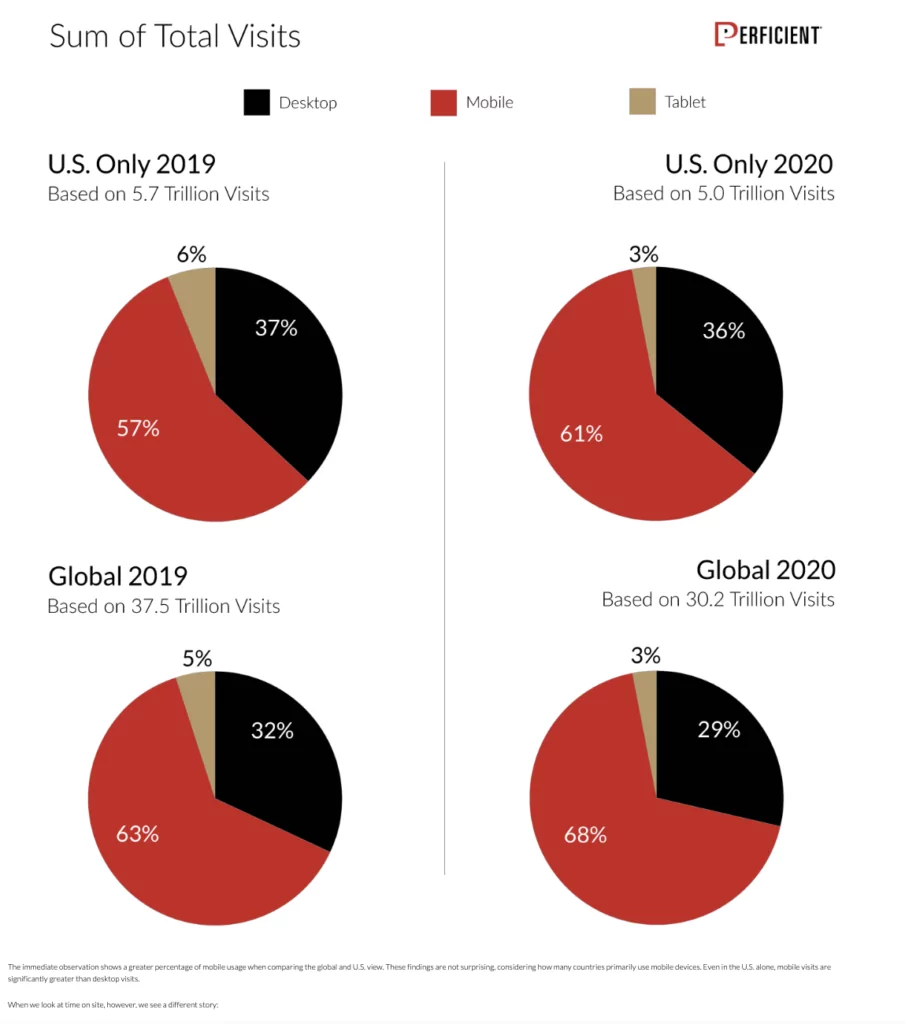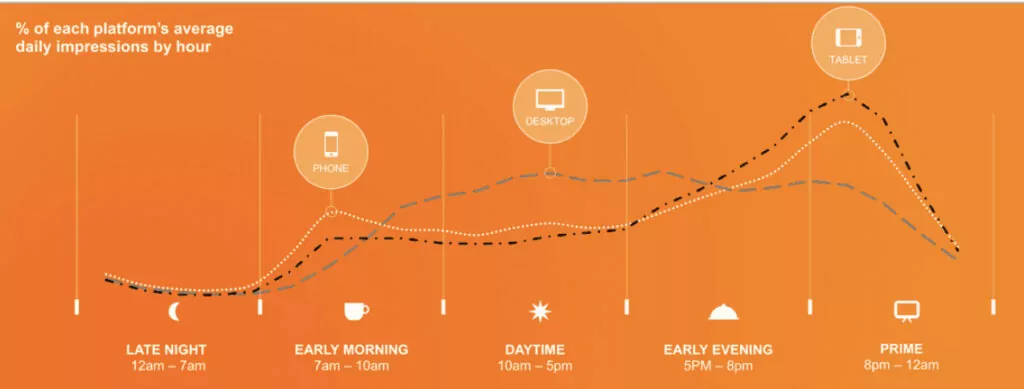Customizing your marketing is becoming increasingly difficult as consumers use multiple devices, yet cookies slowly fade out. How can you track your website traffic and target your content for visitors? A multi-device marketing strategy builds a unified view of your customers, offering a more reliable method for tracking and reaching customers than using cookies.
Learn how to build and implement a cross-device marketing strategy in 2022.
Key Takeaways:
- Multi-device marketing is reaching customers who use several devices to visit your franchise’s various channels before making a purchase.
- Website cookies are going away, leaving businesses to find alternative ways to track multi-device traffic.
- Optimize your website, email campaign, and SEO to offer a seamless multi-device experience.
- Analyze the results of your multi-device campaign using first-party data rather than cookies for more detailed reports on consumer behavior
Why Should You Do Multi-Device Marketing?
Mobile usage is increasing, with 61% of website visits coming from a mobile device. The other traffic comes from desktops and tablets. Additionally, some of your visitors access your website through multiple devices.
For example, a consumer might use their smartphone while researching options. Then, they’ll switch to their desktop to order a product. However, they might opt for picking up the product in a franchise’s physical location.
A successful multi-device marketing strategy creates a seamless experience across your devices and allows you to use cross-targeting techniques to reach all your audience segments.
Source: Perficient
Challenge with Multi-Device Marketing
Seamless marketing isn’t as easy as before, especially since cookies aren’t around for much longer. Cookies are digital markers that give visitors an ID. That ID identifies visitors whenever they stop by your sites on their devices. Some cookies can even track the same user across devices to help you monitor their visits.
However, cross-device tracking visitors can be more difficult without cookies as you won’t know whether your traffic is a new visitor, returning visitor, or a loyal customer from another device. Instead, your website will treat each new device as a unique visitor.
What can you do to still offer your visitors a positive customer experience across devices without the assistance of cookies in tracking and identifying visitors?
Alternatives to Cookies for Multi-Device Marketing
You can use three primary options instead of cookies in your multi-device marketing.
Create User Logins
The simplest solution is to encourage your visitors to create an account. Then, whenever they visit your website, they log in with the device they’re using, and you can easily identify them.
For example, many consumers who shop at Target will log into their app or create an account on their website, allowing them to customize each user’s experience.
Predictive User IDs
You don’t need cookies to give visitors an ID. Cookies have multiple flaws, like they aren’t personal and limit the amount of information you can assign to each visitor. However, when you use cookieless tracking with cloud-based IDs, you track visitors by more than just their browser.
A cloud-based ID system is more complex than cookies because it uses an algorithm to identify visitors and associate them with visitors from other devices that share characteristics. As a result, you can track visitors across devices and gain deeper insights into their actions.
Use First-Party Data
The data you collect about your visitors are just as valuable as assigning an ID. It’s often even more useful because you can offer the most personalized experience by segmenting your audience based on behaviors and characteristics.
For example, first-party data includes intent keywords your visitors used to find your site, what pages they visited on your website, what links they clicked, and other relevant information. You can use that information to determine their interest level, the location of the device, and additional information that allows you to offer an experience based on that data rather than an assigned ID.
How To Perform Multi-Device Marketing
These five tips will improve your multi-device marketing strategy and help you track your visitors on multiple devices.
1. Upgrade Your Website
Since over half of your website visitors come from mobile devices, you should optimize your website to support multi-device browsing.
You can lose 61% of your traffic if you don’t optimize your website for mobile devices. In addition, 40% of visitors with a poor experience on your mobile site will go to your competitor.
An optimized site automatically adjusts its appearance and navigation to make it compatible with mobile browsing, such as enlarging buttons and breaking up the text to fit on a mobile screen.
2. Optimize Email for Mobile Browsing
About 59% of consumers say email marketing influences their buying behavior.
Since 85% of consumers check their email on their phones, you’ll want to optimize your email marketing and website to ensure a seamless browsing experience. In addition, 70% of email users will delete a poorly formatted message on their mobile.
Your email campaigns often include links to other channels, like your social media channel, customized landing pages, and your website. You want to ensure that the transition from email to those other channels is seamless, no matter which device the visitor began on and whether they switched devices during their browsing experience.
3. Target New Keywords
Around 71% of consumers prefer voice search over typing their searches. This trend will significantly impact SEO as keywords will change to more natural, spoken phrases and questions.
Creating a multi-device marketing strategy includes helping users on different devices find your content. Are you including a mix of short-form typed keywords and full sentence keywords to help users on other devices find your marketing content?
4. Create a Seamless Experience
The transition between your online locations should be seamless to minimize the interruptions in the user’s experience. For example, some businesses allow consumers to make purchases directly through Facebook to skip the transition from social media to an e-commerce shop.
Integrating your channels can also minimize the number of devices a user switches between as they can complete all stages of the purchase process as one experience.
However, there will still be many times when a user will switch between devices. For instance, many consumers use their desktops during workdays as that’s what they spend most of their time on while at the office. Then, once they go home, they switch to their tablets or phones to continue browsing.
You want to ensure your messaging and experience remain consistent on all these devices.
Source: SmartInsights
5. Create a Unified Customer View
Connecting all your channels to a centralized automation platform collects data in one location. Compiling this data allows you to build a unified customer view of your traffic across each channel and from different devices.
You will use your platform to identify patterns and analyze data. That data will help you create a personalized experience across channels, even without the help of cookies.
Track Your Leads Across Devices
MXTR improves your multi-device marketing by allowing you to track your leads across devices as we move into a cookieless future. Through our marketing automation platform, you can create a unified customer view that allows you to offer a customized experience for each lead.
Schedule a demo to learn more about how our marketing automation helps businesses reach more leads.
Featured Image: istockphoto









